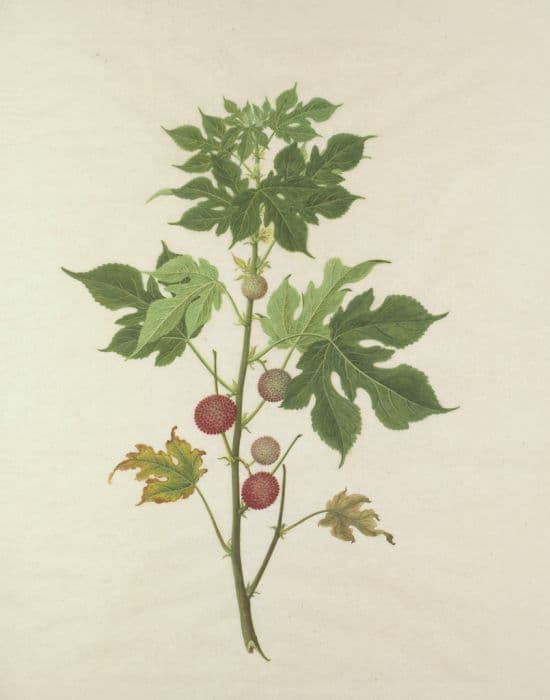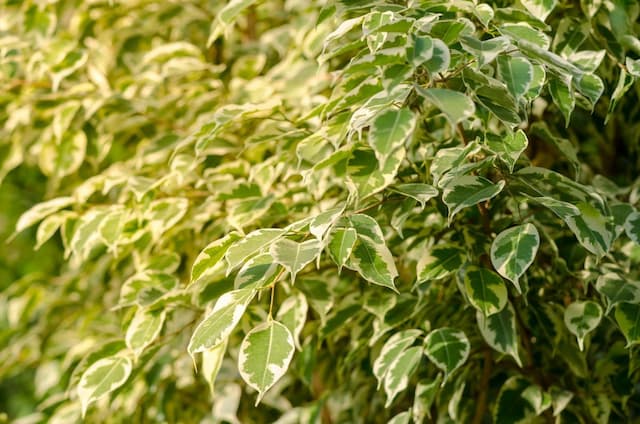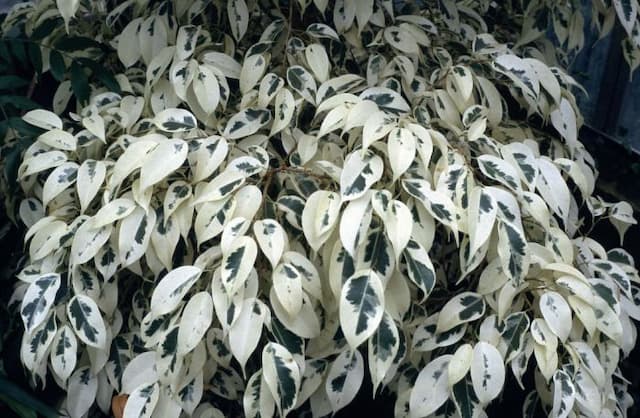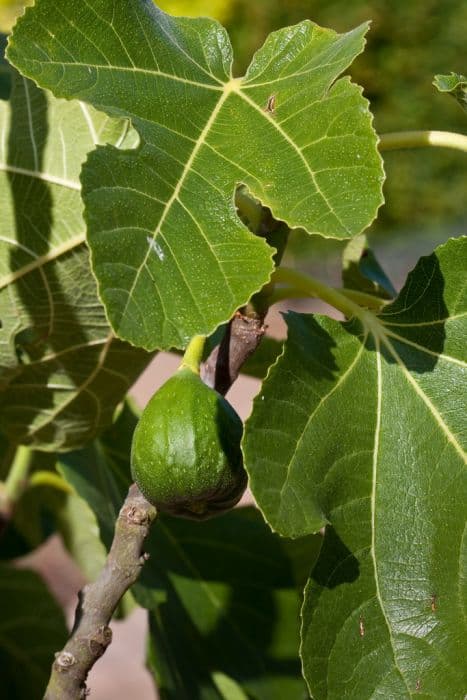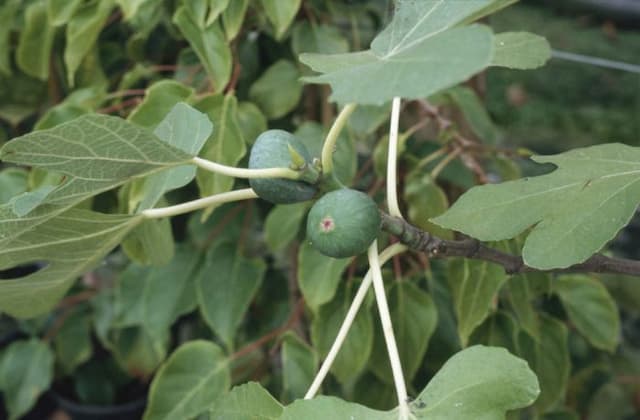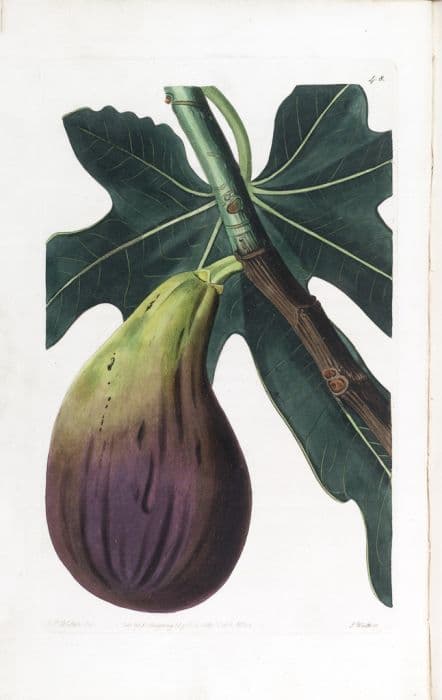Rusty Fig Ficus rubiginosa



ABOUT
A tree-like plant with a hemispherical, dense crown, reaching up to 30 m (100 in) in height.
The trunk is broad, yellow-brown. The lower part of the trunk is covered with aerial roots. The bark is relatively smooth, with longitudinal grooves. Young shoots are very ornamental, the apical shoots reaching 2 inches in length, pink-red.
Leaves are broad, 1.1/2 - 7.1/2 inches long and 0.1/2 - 5.1/4 inches wide, coarse-skinned, oval in shape. Young leaves have densely pubescent, pinkish-red laminae on both sides. Ficus rustifolia is a very decorative plant, attracting the attention of many plant lovers.
The fruits are small, round, yellow, and can ripen and turn red at any time of year, peaking in spring and summer.
Despite its relatively large leaf size, it is popular for bonsai work because it is easy to work with and hard to kill.
About this plant
 Names
NamesFamily
Moraceae
Synonyms
Port Jackson fig, Rusty fig, Little-leaf fig
Common names
Ficus australis; Ficus rubiginosa var. glabrescens; Mastosuke rubiginosa; Urostigma rubiginosum; Ficus rubiginosa var. lucida; Ficus rubiginosa var. variegata; Ficus platypoda; Ficus sp. A ; Urostigma leichhardtii; Ficus leichhardtii var. angustata; Ficus leichhardtii; Ficus platypoda var. petiolaris; Ficus platypoda var. subacuminata; Ficus platypoda var. mollis; Ficus macrophylla var. pubescens; Ficus baileyana; Ficus shirleyana
 Toxicity
ToxicityTo humans
Leaf juice is poisonous. Contacting the skin can cause an allergic reaction in both children and adults. Ingesting can cause severe food poisoning.
If growing at home, keep it out of the reach of children.To pets
The leaves are also poisonous to many species of animals and birds. Ingesting can cause food poisoning. May cause death.
 Characteristics
CharacteristicsLife cycle
Perennials
Foliage type
Semi-deciduous (Semi-evergreen)
Color of leaves
Green
Height
Up to 50 feet
Spread
Up to 30 feet
Plant type
Tree
Hardiness zones
11
Native area
Australia
Benefits
 General Benefits
General BenefitsVery embellishing plant;
Cultivated as bonsai or in the open ground for decorative purposes;
Fruits are consumed by many species of birds. Air-purifying Qualities
Air-purifying QualitiesFicus can clean indoor air from harmful chemicals such as formaldehyde and hydrocarbons.
 Other Uses
Other UsesBecause of their size, figs are used as a shade trees in parks and on golf courses.
Ficus survives pruning well, so sometimes it is used as a hedge.
The wood is light and it is used to make toys and boxes.
Interesting Facts
 Feng Shui
Feng ShuiIn Feng Shui, ficus means money. In order for the ficus to bring maximum benefit according to feng shui, place it on the eastern or south-eastern side of the house.
 Zodiac Sign Compitability
Zodiac Sign CompitabilityCAPRICORN
Rusty Fig favors the Capricorns. It brings good luck in your career and helps you to concentrate. Plant Symbolism
Plant SymbolismFig trees have inspired mankind for thousands of years.
In the Book of Deuteronomy, figs are one of the seven sacred species along with wheat, barley, grapes, pomegranates, olives, and dates/honey. Its presence is indicative of the "promised land."
The fig tree is the third fruit tree mentioned in the Bible after the Tree of Life and the Tree of Knowledge. Figs are also described in the Qur'an and Hadith as the fruit of paradise.
 Water
WaterIn their natural environment, ficus prefers a humid climate, so at home, it is advisable to keep them sufficiently humid.
Water the bonsai as the soil dries out.
In summer, water 1-2 times a week. The soil should dry well before the next watering.
In winter, watering should be reduced to once every 7 to 10 days.
Always avoid excessive moisture. Light
LightFicus is a quite stable plant and can live in a shady place. However, the ideal lighting for it would be a bright place, but without direct sunlight.
 Temperature
TemperatureThe ideal summer temperature for ficus is about 61 - 77 °F.
It needs high temperatures to survive. However it requires about 66 °F in winter.
But too low temperatures will cause the plant to become diseased and die. Pruning
PruningFicus rubiginosa likes to grow bushy so the plant requires regular pruning. If you have a bonsai, root pruning is also very important. Ficus is perfectly tolerant of pruning. The crown is shaped from February to March. Also, excessive branches can be trimmed in fall.
 Cleaning
CleaningAs needed
 Soil
SoilOrdinary sable soil is not suitable for growing bonsai. Soil with a mixture of sod and leaf soil, mulch, peat, and sand is suitable for the plant. Or you can make the soil in the following proportions: peat, humus, or crushed pine bark and mix it with coarse sand or stone chips in the proportion 50:50.
 Repotting
RepottingTransplant bonsai in the spring, once a year, as long as the plant is under 5 years old. After that, transplanting can be done less frequently - once every 5 years. If necessary, change the top layer of soil.
When transplanting, prune the roots and completely change the soil. After that, water abundantly, and in half an hour drain the excess water.
Ordinary sable soil is not suitable for growing bonsai. Soil with a mixture of sod and leaf soil, mulch, peat, and sand is suitable for the plant. Or you can make the soil in the following proportions: peat, humus, or crushed pine bark and mix it with coarse sand or stone chips in the proportion 1:1. Humidity & Misting
Humidity & MistingNeeds high humidity. It is necessary to spray the plants daily with room temperature water, especially in winter. After spraying, plants should be shaded from the direct sun.
Also, to maintain high humidity, it is recommended to put a container with wet pebbles nearby, or put a humidifier. Suitable locations
Suitable locationsIndoor
All year round
Outdoor
Outdoors is possible year-round in hardiness zones 12-13. In other cases, the plant can be kept outside as long as the temperature outside is greater than 15 °C (66 °F).
Hardiness zone
12 - 13 USDA
 Life cycle
Life cycleThe active growth phase of the ficus is in spring. In summer, the ficus blooms, but it is quite difficult to achieve blooming under room conditions. In winter the hibernation stage begins. Changes in appearance are possible.
 Propogation
PropogationPropogation time
Ficus is propagated by cuttings the tops of shoots, leaves, and seeds. When cutting secreted milky sap should be washed off with water. Then cuttings are planted in sand, in seedling boxes or on racks, where they will be kept at 75-82 °F with constant moistening.
After rooting, cuttings are planted in pots 3,5 inches in diameter in a soil mixture of turf, mulch, leaf soil, and sand in equal parts.
The same temperature is required for seed germination. Seeds are sown in an earth mixture of leaf soil and sand in equal parts. Seedlings are picked when the first leaf appears, and then, as they grow, are planted in pots 3 inches in diameter.Ficus is propagated by cuttings the tops of shoots, leaves, and seeds. When cutting secreted milky sap should be washed off with water. Then cuttings are planted in sand, in seedling boxes or on racks, where they will be kept at 24-28 °C (75-82 °F) with constant moistening.
After rooting, cuttings are planted in pots 9 cm (3.5 in) in diameter in a soil mixture of turf, mulch, leaf soil, and sand in equal parts.
The same temperature is required for seed germination. Seeds are sown in an earth mixture of leaf soil and sand in equal parts. Seedlings are picked when the first leaf appears, and then, as they grow, are planted in pots 7 cm (2.7 in) in diameter.
 Pests
PestsMealybug, Aphid
 Diseases
DiseasesRoot Rot
